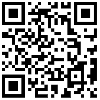When your USB drive turns read-only, it can leave you feeling helpless. However, there's no need to worry. This guide will walk you through a detailed recovery process to help you resolve this issue with ease.
First off, let's explore why a USB flash drive might turn read-only. Typically, this happens due to a file system error or a hardware malfunction within the USB drive. As a result, you may find yourself unable to write or modify files on the drive, though you can still access and read them. For users who rely on USB drives for storing and transferring data, this scenario undoubtedly presents significant problems.
So, how can you recover your USB drive? Start by trying some straightforward fixes. You could utilize Windows' built-in disk check and repair function or explore some of the free USB drive repair tools available, like Mformat, USBoot, etc. These tools are designed to automatically detect and correct errors on your USB drive, helping to restore its normal read and write functions.
If these initial steps fail, then it might be time to consider a more professional recovery approach. For instance, you could seek assistance from a professional data recovery service. Such services often employ advanced tools and equipment to retrieve data from the USB drive, though they may charge a fee for their services. The cost can vary depending on the complexity of the recovery process and the extent of data loss.
Now, let's examine some pertinent facts and figures. Studies indicate that around 90% of USB drive failures can be rectified, with approximately 80% of these incidents stemming from file system errors. By using certain professional USB disk repair tools, about 70% of these disk failures can be resolved. This data highlights that a read-only USB drive isn't an unsolvable dilemma; with the right methods, you can easily reinstate its regular read and write capabilities.
From the information and analysis presented in this article, we can draw the following conclusion: After a USB drive becomes read-only, it can be fixed using simple techniques and specialized tools. These include running the Windows disk check and repair function, utilizing free USB drive repair utilities, or even seeking out professional data recovery services. These approaches are both feasible and effective, enabling a swift restoration of the USB drive's standard read and write functions.
When attempting these fixes, keep the following pointers in mind: Firstly, for critical data, ensure you have timely backups to prevent any data loss. Secondly, when selecting a USB drive repair tool, opt for a reputable brand and version to avoid exacerbating the issue. Lastly, if the USB drive is beyond repair or has suffered substantial data loss, it's crucial to promptly engage professional data recovery services.
In summary, encountering a read-only USB drive isn't the end of the world—with the right methods and tools at your disposal, resolving the issue becomes a manageable task. It is hoped that this article's insights and analysis will equip you with a deeper understanding of the recovery processes post a USB drive becoming read-only, and offer practical advice and precautions to consider.



